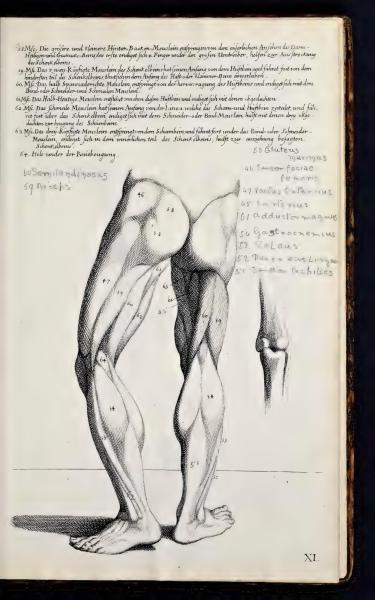58. The larger and smaller gluteal muscles originate from the external view of the iliac crest and ischium. The first ends 8 fingers below the great trochanter and assists in the extension of the femur.
59. The biceps femoris muscle originates from the hip and continues underneath the internal part of the femur. It is considered beneficial from the start of the greater trochanter. 60. The semitendinosus muscle arises from the projection of the hip and ends with the sartorius and gracilis muscles. 61. The semimembranosus muscle mixes internally above the hip, and intermixes with those of the thigh.
62. The pectineus muscle starts from the line dividing the pubis and hip bones, extending over the femur, ending with the sartorius or gracilis muscle, aiding with the mentioned adduction of the thigh.
63. The gracilis muscle originates from the pubis bone and continues under the sartorius or gracilis muscles, ending in the internal part of the femur, helping in the outward movement of the femur.
64. Hold under the knee bend. 65. Semitendinosus. 59. Rectus. 58. Gluteus maximus. 46. Tensor fasciae femoris. 47. Vastus internus. 45. Gracilis. 161. Adductor magnus. 54. Gastrocnemius. 52. Soleus. 53. Peroneus longus. 51. Achilles tendon.
Translation Notes: *Sartorius* and *gracilis* are muscles important in leg movement. The *great trochanter* refers to the prominent part of the thigh bone.
